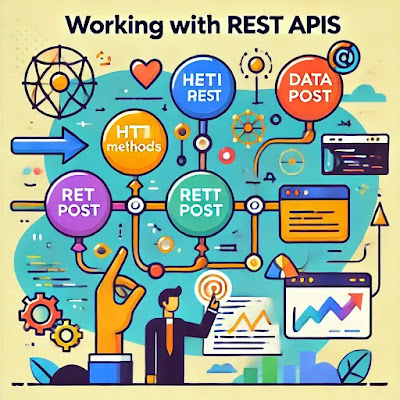Async/Await: Writing Cleaner Asynchronous JavaScript Code
Async/Await: Writing Cleaner Asynchronous JavaScript Code
Handling asynchronous operations is a fundamental part of modern JavaScript development. Whether you're making API requests, fetching data from a database, or processing files, it's crucial to write code that handles asynchronous tasks effectively. The introduction of async/await in JavaScript has made it much easier to manage asynchronous operations, offering a cleaner and more readable alternative to using Promises with then() and catch().
In this article, we’ll explore how async/await works, why it simplifies asynchronous code, and how you can use it to write cleaner JavaScript.
What Is Async/Await?
Async/await is a syntax built on top of Promises in JavaScript that allows you to write asynchronous code that looks and behaves like synchronous code. It eliminates the need for complex then() chains and makes your code easier to follow and debug.
1. async Keyword
The async keyword is used to define a function that always returns a Promise. Inside an async function, you can use the await keyword to pause execution until a Promise resolves.
async function fetchData() {
let response = await fetch('https://api.example.com/data');
let data = await response.json();
console.log(data);
}
fetchData();
In this example, the function fetchData is marked with async, and the await keyword is used to wait for the Promise returned by fetch() to resolve. The code after await only runs once the Promise has been fulfilled.
Using await in Async Functions
The await keyword can only be used inside functions declared with the async keyword. It pauses the execution of the function until the Promise is resolved or rejected, allowing you to write asynchronous code in a more synchronous-looking style.
async function getUserData() {
let user = await fetchUser();
console.log(user); // Logs user data after fetching completes
}
With await, you don’t need to use then() to handle the result of the Promise, making the code cleaner and easier to read.
Error Handling with Async/Await
One of the major advantages of async/await is that it simplifies error handling. Instead of using catch() with Promises, you can use a traditional try/catch block to handle errors within an async function.
async function fetchData() {
try {
let response = await fetch('https://api.example.com/data');
if (!response.ok) {
throw new Error('Network response was not ok');
}
let data = await response.json();
console.log(data);
} catch (error) {
console.log('Error fetching data:', error);
}
}
fetchData();
In this example, if there’s an error during the fetch request or while processing the data, the error is caught by the catch block, and the appropriate error message is logged. This makes error handling in asynchronous code more intuitive and similar to how errors are handled in synchronous code.
Running Multiple Asynchronous Tasks
Often, you’ll need to run multiple asynchronous operations in parallel or sequentially. Async/await makes this easy to manage, whether you’re waiting for one task to finish before starting another or running them concurrently.
1. Running Tasks Sequentially
If you need to run tasks one after the other, you can simply use multiple await statements in your function:
async function runSequentialTasks() {
let task1 = await asyncOperation1();
let task2 = await asyncOperation2();
console.log('Both tasks completed:', task1, task2);
}
This ensures that asyncOperation2() only runs after asyncOperation1() has completed, which can be useful when the tasks depend on each other.
2. Running Tasks Concurrently with Promise.all()
If the tasks can run independently of each other, you can run them concurrently using Promise.all(). This allows you to execute multiple Promises in parallel and wait for all of them to complete:
async function runConcurrentTasks() {
let [task1, task2] = await Promise.all([asyncOperation1(), asyncOperation2()]);
console.log('Both tasks completed:', task1, task2);
}
In this example, both asyncOperation1() and asyncOperation2() are executed at the same time, and await pauses the function until both operations have finished.
Best Practices for Using Async/Await
- Always Use
try/catch: Always wrap your async code intry/catchblocks to handle any errors that may occur during the execution of asynchronous tasks. - Avoid Blocking Code: Be mindful of using
awaitin loops, as it can lead to sequential execution when parallel execution is possible. UsePromise.all()for parallel execution when needed. - Return Promises: Make sure your async functions return a Promise. Even if you're using
awaitinside a function, it should still return a Promise to ensure that other parts of your code can handle the result properly. - Use
asyncFunctions for Consistency: If you're dealing with Promises, prefer usingasyncfunctions throughout your codebase to keep it consistent and readable.
Conclusion
Async/await has made handling asynchronous operations in JavaScript simpler and more readable by eliminating the need for complex Promise chains. By using async functions and the await keyword, you can write cleaner, more maintainable code that handles asynchronous operations in a synchronous-like manner.
Whether you're working with API requests, file processing, or other async tasks, async/await offers a powerful way to manage these operations effectively, making your JavaScript code more robust and easier to understand.



Comments
Post a Comment